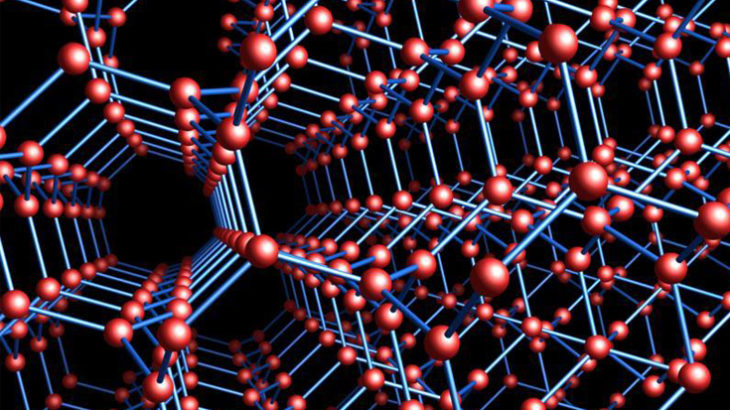Teaming Up to Drive New Nanoelectronics Discoveries

UCL and Cambridge University are spearheading inter-institutional research aimed at generating new knowledge on the properties of electrons in nanoscale semiconductors – with equipment-sharing making a critical contribution to their pioneering work.
Funded by the Engineering and Physical Sciences Research Council (EPSRC), this research – which also involves Royal Holloway, University of London and the University of Birmingham – is led by world-renowned physicist Sir Michael Pepper, Pender Professor of Nanoelectronics at UCL. The aim is not simply to identify unknown physical phenomena at the very smallest scale and enhance understanding of ‘spintronics’ – the intrinsic spin exhibited by electrons. It is to use these discoveries as gateways to the development of nanoscale processes and components with practical applications in fields such as quantum computing.
Nanoelectronics: A Matter of Scale
When it comes to electronics, some of the most fascinating and potentially valuable phenomena take place at the very smallest scale.
- At the subatomic (or ‘quantum’) scale, matter and the forces governing it exhibit a whole host of specific, unusual and sometimes unexpected behaviours.
- As a result, scaling semiconductor technology down to the nanoscale promises game-changing advances in the speed and sophistication of computer processing and in the sphere of electronics more generally.
At this quantum frontier of science, however, much is still unknown and the drive to illuminate the darkness goes on – a mission in which Professor Sir Michael Pepper, knighted in 2006 for services to physics, is a global leading light. “One key need is to understand the quantum nature of the electron, develop a better understanding of the nanoscale effects involved and use this understanding to design and fabricate components that can be connected up to form nanoscale semiconductor devices,” he explains.
In a 5-year, £6.5M EPSRC-funded project – Nanoelectronic-based Quantum Physics: Technology and Applications – Sir Michael is focusing on helping to achieve precisely that. This cutting-edge research
combines the extensive nanoelectronics expertise available at UCL with that of Royal Holloway as well as Cambridge University’s iconic Cavendish Laboratory where, for example:
- Francis Crick and James Watson undertook seminal work on the structure of DNA back in the 1950s.
- Professor Sir Michael Pepper himself founded the Semiconductor Physics Research Group in 1985.
“The current project builds on the relationships that several of us who are involved in it developed when we worked together at Cambridge,” Sir Michael explains, highlighting the crucial role that personal contacts and past experience of partnerships can often play in oiling the wheels of ground-breaking research.
Joining Forces, Pooling Resources
Integrating three distinct elements – theoretical work, semiconductor growth/fabrication, and measurement of quantum effects – the project is drawing on Royal Holloway’s specialist expertise in working at extremely low temperatures of a few milli-Kelvin where it is much easier to observe these effects. At these incredibly cold temperatures just above absolute zero, in semiconductor devices a few tens of microns across, electric fields can be used to squeeze electrons down to a very small size and then manipulate them for detailed study.
The Cavendish, meanwhile, offers the only facility in the UK (and one of very few in the world) capable of growing semiconductor materials that have layers of the quality required by the current project. The Laboratory is also providing researchers from the UCL team with further outstanding facilities for preparing samples and processing them into devices:
- A state-of-the-art Clean Room represents an ideal place to process semiconductor materials and manufacture electronic components – delivering the environment free from dust, microbes and other contaminants, with airflow, temperature, humidity and pressure all closely controlled, that is essential for such tasks. It also offers a range of high-grade equipment such as a high-resolution electron beam lithography facility.
- A suite of four dilution refrigerators – helium-based cryogenic devices that provide continuous cooling for samples down to a few milli-Kelvin in magnetic fields of up to 15 Teslas. This suite supplements the two dilution refrigerators available at UCL.
Advancing, Achieving, Accelerating
Now into its fifth year, the EPSRC-supported project has made important headway – with the pooling of resources helping to ensure that the team is meeting its objectives, securing significant breakthroughs and achieving this much more quickly than would otherwise have been possible. Indeed, Sir Michael sees enormous potential for further extending the collaborative relationships that underpin the initiative to include other SES Consortium members. “I’ve worked very closely with Professor Peter Edwards of Oxford University for many years,” he says.
“Sharing facilities is absolutely critical to a pioneering project like this,” Sir Michael comments. “It’s hard to have all the highly sophisticated equipment you need available within a single department or even within a single university, so inter-institutional collaboration makes a lot of sense. The more capacity and capabilities you have to bring to bear on a scientific question, the better.”
“It would be invaluable to add to that collaboration by looking together at some of the materials and devices developed by the current EPSRC-funded project. The more we can link different expertise that can confront nanoelectronics challenges, the sooner we’ll arrive at breakthroughs that eventually unlock new possibilities in computing and electronics that fundamentally impact the world around us.”
Key Publications
- Key work (2018): Holes reveal first fractional quantization
- UCL Department of Electronic & Electrical Engineering homepage
- UCL Nanoelectronics homepage
- Cavendish Laboratory
- Royal Holloway Department of Physics
- Current EPSRC-funded project
Contact

Professor Sir Michael Pepper
Department of Electronic & Electrical Engineering, University College London

